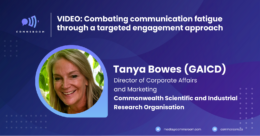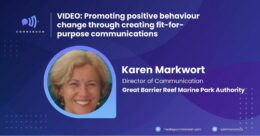An app designed to assist passengers with visual impairments in navigating public transport systems in Australia is currently being tested on a popular bus route in Adelaide.
The developer of this technology is optimistic about its potential for wider implementation. Cassie Hames, a software programmer with a unique perspective, was inspired to create an app due to her personal experiences of being consistently overlooked at bus stops.
“I could be wearing a high-vis vest while holding a sign and I’m still left behind because the bus either doesn’t see me, doesn’t know I’m there and continues driving past,” she said.
A new app called “See Me” has been developed to enhance the efficiency of bus transportation. This cutting-edge app connects to the bus through an onboard system, which promptly alerts the driver whenever a passenger is waiting. The passenger is provided with a notification through spoken, visual, and haptic means when the bus is nearing the requested destination.
“You do need to have an internet connection so that you can connect in with the real-time feed … of the bus system, so it will show you what bus is upcoming and when it’s due to arrive,” said Hames.
“On the bus, we’ve installed a device that we’ve connected with the onboard bus bell system, so that’s monitoring the requests as the bus is approaching different stops.
“It’s something that could be scalable and go across the whole bus fleet … [and] across all public transport options — we’ve started with a bus but certainly my goal is to have it rolled out onto trains and trams as well because the issue of catching public transport isn’t just related to buses.”
The software is also set to be trialled in New South Wales and Queensland. The trial in Adelaide will be conducted on Adelaide Metro’s Free City Connectors from Monday to Friday for a duration of six months. According to Hames, the software provides enhanced accessibility for commuters with visual impairments or disabilities.
“It gives us greater opportunity to go hang out with friends, go to a cafe, get to work and not be late because we missed the bus,” she said.
“It just helps increase our independence.”
Top innovation breakthrough
The government of SA stated that although the app was initially developed to assist individuals with visual impairments, it has the potential to be used by “people of all abilities, with a broader potential to ease anxiety for all public transport customers.”.
“If we can find ways in which we can make our public transport system more accessible, more inclusive then we’re going to grab it,” MP for Adelaide Lucy Hood said.
“This isn’t just for people who may be low vision or vision-impaired, but people who perhaps suffer from anxiety on the public transport network, our senior commuters.
“It’ll just give them the confidence to know that their bus is coming and where their stop is to get off.”
The technology mentioned by Transport Minister Tom Koutsantonis has the potential to revolutionise the way buses operate, enabling them to be utilised “as an on-demand service.”.
“What Cassie has developed is, quite frankly, remarkable,” he said.
“I think of all the innovations in public transport, other than decarbonisation, this could be one of the most significant innovations in public transport we’ve ever seen.
“I hope this trial goes well — I’m very confident about it because it is intuitive, it sounds easy to use and importantly it gives the disability sector the ability to facilitate and get onto our public transport system.”
Hames’ app was recently honoured as one of the three recipients of the prestigious 2022 Holman Prise, which celebrates individuals with vision impairment who have made significant contributions in the field of innovation.
The reason behind choosing the name See Me was due to her personal encounters with being consistently stranded at various stops.
“Standing at the bus stop, you’re unsure whether you’re going to be seen,” she said.
“It’s just a play on that to go, ‘See me, I’m standing here, let me catch the bus’.
“It’s just about being seen.”
This article was also published in Public Spectrum.
Post Views: 109
Justin Lavadia is a content producer and editor at Public Spectrum with a diverse writing background spanning various niches and formats. With a wealth of experience, he brings clarity and concise communication to digital content. His expertise lies in crafting engaging content and delivering impactful narratives that resonate with readers.






























